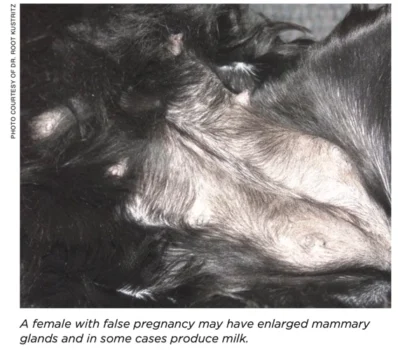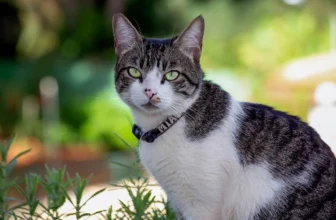As a wirehair cat owner, the journey through your cat’s pregnancy can be both exciting and nerve-wracking. It’s important to be aware of the common health issues that can arise during wirehair pregnancy and how to address them. With proper care and attention, you can help ensure a safe and healthy pregnancy for your furry friend. In this article, we’ll discuss the signs of pregnancy in wirehair cats, common health issues that may arise, how to address them, grooming during pregnancy, preparing for labor and birth, and postpartum care. Let’s get started.
Signs of Pregnancy in Wirehair Cats
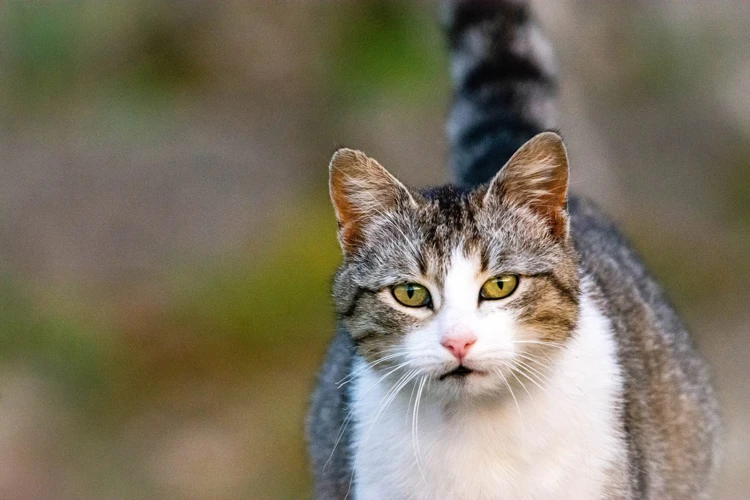
During wirehair cat pregnancy, it is crucial for cat owners to be aware of the signs that indicate their pet is expecting. These signs can help cat owners keep track of the duration of pregnancy and monitor their pet’s health.
Weight Gain: One of the most noticeable signs of pregnancy in wirehair cats is weight gain. Normally, wirehair cats tend to weigh between 8-12 pounds, but pregnant cats can gain up to 2-4 pounds. Cat owners should take note of their cat’s weight before they have been bred, and monitor their weight throughout the pregnancy.
Change in Appetite: Pregnant wirehair cats may experience a change in appetite. Some cats may lose their appetite, while others may eat more than usual. However, it’s important to note that overeating is not healthy for pregnant cats and may lead to gestational diabetes. Cat owners should ensure that their cats maintain a healthy diet during wirehair pregnancy.
Mammary Gland Enlargement: As pregnancy progresses, the mammary glands of wirehair cats may enlarge. This is due to the production of milk in preparation for nursing the kittens after delivery. Cat owners may visually observe this change by feeling for the presence of small lumps on their cat’s belly.
Keeping a close eye on these signs of pregnancy is important for wirehair cat owners. For more detailed information about wirehair cat pregnancy and its stages, readers can refer to our wirehair pregnancy stages guide for cats. For tips on how to properly feed pregnant wirehairs, check out our feed pregnant wirehairs tips article.
Weight Gain
One of the most noticeable signs of pregnancy in wirehair cats is an increase in body weight. It’s normal for a pregnant queen to gain weight during gestation, as she’s providing nourishment to growing kittens. However, excessive weight gain can lead to complications during delivery. It’s important to monitor your cat’s weight throughout pregnancy, and consult with a veterinarian if you have any concerns. To prepare for the arrival of wirehair kittens, check out our wirehair kitten checklist.
Change in Appetite
One of the most obvious signs of pregnancy in wirehair cats is a change in appetite. This may occur at any point during pregnancy. Some pregnant cats may lose their appetite, while others may experience an increase in hunger and consume more food than usual.
It’s important to monitor your cat’s appetite closely during pregnancy as sudden changes may indicate health issues. If your cat stops eating, you should contact your veterinarian immediately.
During the first few weeks of pregnancy, some wirehairs may experience morning sickness and may not want to eat anything. However, this typically resolves on its own after a few days. Additionally, pregnant wirehairs may exhibit food cravings or aversions, and their preferred foods may change.
To promote good nutrition and make sure your cat receives sufficient nutrients, consider offering a variety of high-quality, nutritionally balanced foods for pregnant cats. It’s also important to avoid foods that may be harmful to your cat during pregnancy, such as raw meat and fish or foods high in mercury.
Ensuring that your cat drinks plenty of water is vital during pregnancy, especially if she experiences vomiting or diarrhea.
If you’re unsure about your cat’s diet during pregnancy, consult with your veterinarian for guidance and advice on nutrition and supplementation.
In conclusion, while changes in appetite is a common pregnancy sign for wirehair cats, it is essential to monitor your cat’s eating habits carefully. Providing a balanced diet and ensuring adequate hydration will promote your cat’s overall health. To learn more about how to prepare for labor and delivery with wirehair cats, read our wirehair labor and delivery tips. Additionally, if you want to learn more about postpartum care for wirehair moms and kittens, check out our article on postpartum care for wirehairs mom and kittens. Finally, if you are considering breeding wirehairs, read our guide on breeding wirehairs responsibly.
Mammary Gland Enlargement
During wirehair pregnancy, mammary gland enlargement is a common sign that indicates the cat’s body is preparing for lactation. The mammary glands will increase in size and become firm to the touch. This process is normal and expected. However, it is important to monitor the mammary glands for any unusual changes or signs of infection.
Signs of Mammary Gland Infection:
It is important to monitor mammary gland enlargement for any signs of infection. If you notice any of the following signs, contact your veterinarian immediately:
| Signs of Mammary Gland Infection | Description |
|---|---|
| Foul-Smelling Discharge | If you notice any discharge coming from the mammary glands, contact your veterinarian. A foul smell could indicate an infection that needs to be treated right away. |
| Swelling or Redness | If you notice any swelling or redness around the mammary glands, it could be a sign of infection. Contact your veterinarian for treatment. |
| Fever or Lethargy | If your wirehair cat shows signs of a fever or lethargy, it could indicate a mammary gland infection. Contact your veterinarian right away for diagnosis and treatment. |
How to Address Mammary Gland Enlargement:
Mammary gland enlargement is a normal part of wirehair pregnancy. However, it is important to take steps to help your cat stay comfortable and healthy during this time. Consider the following tips to address mammary gland enlargement:
| How to Address Mammary Gland Enlargement | Description |
|---|---|
| Provide Comfortable Bedding | As your cat’s mammary glands become enlarged and tender, it is important to provide soft, comfortable bedding. This will help prevent discomfort and avoid any complications from lying on hard surfaces. |
| Monitor for Signs of Infection | Regularly check your cat’s mammary glands for signs of infection. If you notice any of the symptoms listed above, contact your veterinarian immediately. |
| Provide Proper Nutrition | To support your wirehair cat’s pregnancy and lactation, provide high-quality food that is specifically formulated for pregnant and nursing cats. This will help ensure that your cat and her kittens receive the necessary nutrients and energy for a healthy pregnancy and nursing period. |
Mammary gland enlargement is a normal part of wirehair pregnancy. However, it is important to monitor for any signs of infection and take steps to help your cat stay comfortable and healthy during this time. Regular vet check-ups are highly recommended to avoid any complications.
Common Health Issues During Wirehair Pregnancy
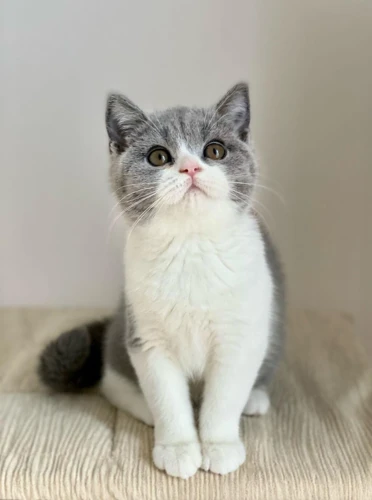
Wirehair cats require additional care and attention during pregnancy, as there are several common health issues that may arise. It is important to be aware of these issues and know how to address them to keep both the mother and kittens healthy.
One of the common health issues that can arise during wirehair pregnancy is gestational diabetes. This condition occurs when the wirehair cat’s body cannot produce enough insulin to regulate blood sugar levels during pregnancy. Symptoms include an increase in thirst and urination, and the wirehair cat may also appear lethargic.
Another health issue that can impact wirehair pregnancy is toxoplasmosis, a parasitic infection that can be contracted from eating raw or undercooked meat. This condition can pose a serious danger to both the mother and her kittens, and can also be transmitted to humans. Symptoms include fever, lack of appetite, and lethargy.
Wirehair cats can also develop eclampsia, or milk fever, during pregnancy. This occurs when the wirehair cat’s calcium levels drop too low. Symptoms include muscle stiffness, a loss of appetite, and restlessness. If left untreated, eclampsia can lead to seizures and death.
Lastly, wirehair cats are also susceptible to respiratory infections during pregnancy. The stress of pregnancy can weaken the wirehair cat’s immune system, making them more vulnerable to infections. Symptoms include coughing, sneezing, and watery eyes. If left untreated, respiratory infections can lead to more severe health complications.
To address these common health issues, it is important to take proper care of the wirehair cat during pregnancy. Ensuring the wirehair cat is receiving proper nutrition is essential, as a healthy diet can help prevent these health issues from occurring. Regular vet check-ups are also important, as it can help identify any developing health concerns early on.
Exercise can also play a role in promoting a healthy pregnancy. However, it is important to not overdo it and cause unnecessary stress on the wirehair cat’s body. Gentle exercises such as walking or playing with toys can help promote good physical health.
It is also important to provide proper grooming during pregnancy. Regular bathing and brushing can help prevent skin infections and matting. Additionally, keeping the wirehair cat’s nails trimmed can prevent scratches and potential infections.
Lastly, preparing for labor and birth is crucial. Creating a comfortable environment for the wirehair cat can help reduce stress and anxiety. It is also important to know the signs of labor and when to seek medical attention.
Being aware of these common health issues and taking the necessary steps to prevent and address them can help ensure a healthy wirehair pregnancy and delivery.
Gestational Diabetes
Pregnancy naturally increases a wirehair cat’s susceptibility to certain health issues, including gestational diabetes. This condition occurs when the cat’s body is unable to produce enough insulin to regulate blood sugar levels during pregnancy. It’s important to recognize the signs of gestational diabetes and address them promptly to ensure the health of both the mother and her kittens. Here are some key symptoms to watch out for and steps to take if your wirehair cat is diagnosed with gestational diabetes.
Toxoplasmosis
During pregnancy, your wirehair cat is more susceptible to contracting toxoplasmosis, an infection caused by the Toxoplasma gondii parasite. This parasite is commonly found in undercooked meats, contaminated water, and infected soil. Here are some common symptoms of toxoplasmosis in cats that can also affect pregnant wirehairs:
- Vomiting
- Diarrhea
- Lack of appetite
- Fever
- Weight loss
- Depression
Toxoplasmosis can cause congenital disabilities during fetal development in cats and can be transmitted to humans through contact with infected cat feces. It is crucial to take precautions to avoid contracting and spreading toxoplasmosis during wirehair pregnancy. Here’s how you can address toxoplasmosis:
- Feed your cat a high-quality, well-balanced diet to boost their immune system and avoid feeding them raw or undercooked meat.
- Ensure hygiene by cleaning litter boxes daily to prevent the growth and spreading of the T. gondii parasite.
- Wear gloves while handling cat litter and wash your hands thoroughly afterward with warm water and soap.
- Avoid handling stray cats or kittens or any contaminated soil and water sources that can carry the T. gondii parasite.
- Consult with your veterinarian to determine if your cat is infected and receive any necessary treatment.
It is important to take the necessary precautions and steps to avoid toxoplasmosis infection during wirehair pregnancy, but do not let fear and anxiety take over. With proper care and management, your beloved wirehair cat and their kittens can have a healthy and safe pregnancy and delivery.
Eclampsia
Eclampsia is a serious health condition that can affect wirehair cats during their pregnancy. It is also known as milk fever and is caused by a sudden drop in calcium levels in the blood. This can occur when the cat is producing milk for her kittens, leading to a calcium deficiency. Eclampsia can occur anywhere from two to five weeks after the kittens are born and can be fatal if left untreated. Here are some signs that your wirehair cat may be experiencing eclampsia:
- Muscle Tremors: If you notice your cat trembling or shaking, especially in the hind legs, this may be a sign of eclampsia.
- Stiffness: Eclampsia can cause a cat’s muscles to become stiff, making it difficult for them to move.
- Restlessness: Your cat may become restless and agitated if she is experiencing eclampsia.
- Panting: Eclampsia can cause a cat to pant and have difficulty breathing.
- Fever: Your cat may have a fever if she is experiencing eclampsia.
- Lack of Appetite: Eclampsia can cause a cat to lose her appetite and become dehydrated.
If you suspect that your cat is experiencing eclampsia, it is important to seek veterinary care immediately. Your vet will likely administer an injection of calcium gluconate to restore your cat’s calcium levels. They may also recommend that you supplement your cat’s diet with calcium to prevent future occurrences.
Preventing eclampsia can be done by ensuring that your cat is getting enough calcium in her diet, especially during the later stages of pregnancy and during lactation. You can provide your cat with calcium supplements, but it is important to consult your vet before doing so, as too much calcium can be just as dangerous as too little.
Remember, prompt veterinary care is essential if you suspect that your cat is experiencing eclampsia. Don’t hesitate to contact your vet if you notice any of the above symptoms.
Respiratory Infections
Respiratory infections are a common health issue that Wirehair cats may face during pregnancy. Symptoms of a respiratory infection include sneezing, coughing, wheezing, and nasal discharge. If you notice any of these symptoms in your cat, it is important to take action immediately.
Here are some tips for how to address respiratory infections in Wirehair cats during pregnancy:
- Isolate the Cat: If you have multiple cats, it is important to isolate the sick cat to prevent the spread of infection.
- Keep the Cat Warm and Comfortable: Make sure your cat is in a warm and cozy environment to help them recover.
- Provide Plenty of Fluids: Dehydration can make respiratory infections even worse, so make sure your cat has access to plenty of water.
- Consult with Your Veterinarian: Your veterinarian can prescribe medication to help ease your cat’s symptoms and help them recover more quickly.
It is important to note that certain breeds, such as the Wirehair, may be more prone to respiratory infections. This is why it is crucial to maintain your cat’s overall health throughout their pregnancy by following a proper nutrition plan, providing regular exercise, and taking them for check-ups with the veterinarian.
If your cat does develop a respiratory infection during pregnancy, following the above steps can help to address the issue and prevent any complications. Remember to always consult with your veterinarian if you have any concerns about your cat’s health during pregnancy.
How to Address Common Health Issues
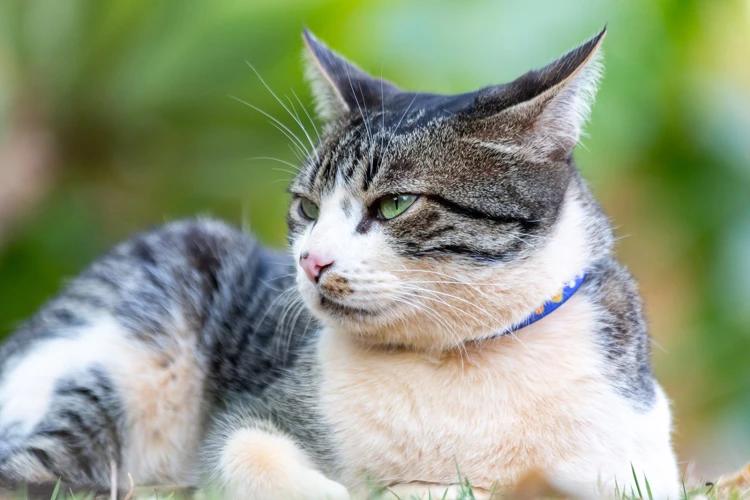
During wirehair cat pregnancy, there are several common health issues that can occur. However, with proper care and attention, these issues can be addressed and prevented. In this section, we will discuss some steps you can take to address the most common health issues that can occur during wirehair cat pregnancy.
Nutrition: Proper nutrition is essential during wirehair cat pregnancy to ensure the health of the mother and her kittens. Pregnant cats require a diet that is high in protein and fat but not excessive in calories. A high-quality, nutrient-dense cat food should be the cat’s primary source of nutrition. However, it is also recommended to provide additional protein sources such as cooked chicken or beef. It’s important to consult with your veterinarian about the appropriate diet for your pregnant cat.
Regular Vet Check-Ups: Regular vet check-ups are crucial during pregnancy to ensure the health of both the mother and her kittens. These visits can help detect any potential health issues and address them before they become a more significant concern. Your veterinarian may also recommend additional testing to monitor the health and development of the kittens.
Exercise: Maintaining a healthy weight through exercise is also essential for pregnant cats. Exercise can help prevent excessive weight gain and keep the cat’s joints healthy. However, it’s important not to over-exercise your cat, especially during the later stages of pregnancy.
It’s important to note that if your cat experiences any unusual symptoms during pregnancy, such as lethargy or a sudden decrease in appetite, contact your veterinarian immediately. These symptoms could be a sign of a more serious health issue.
By following these steps and providing proper care for your wirehair cat during pregnancy, you can address and prevent many common health issues that can occur. And when the kittens arrive, you can ensure their health and wellbeing by following the steps for postpartum care.
Nutrition
One of the most important factors to consider during a wirehair cat’s pregnancy is nutrition. Properly nourishing the mother will ensure that both she and her kittens remain healthy. However, it’s essential to keep in mind that the nutritional needs of a pregnant cat are vastly different from those of an ordinary cat. This is because the queen’s body is working overtime to produce milk and support the healthy development of the fetuses. Throughout the pregnancy, it’s important to pay attention to her diet and adjust it accordingly to provide the right balance of nutrients and calories. In this section, we will provide some tips and guidelines for ensuring that your wirehair cat receives a well-balanced diet.
Regular Vet Check-Ups
One of the most important steps in ensuring the health of your wirehair cat during pregnancy is to schedule regular vet check-ups. During these appointments, your veterinarian will be able to monitor your cat’s overall health and detect any potential complications early on.
Some of the key things your vet may check during a check-up include your cat’s weight, blood pressure, and heart rate. They will also likely want to perform diagnostic tests to check for gestational diabetes, toxoplasmosis, and other common health issues that can arise during pregnancy.
To ensure that your cat receives the best possible care during pregnancy, it’s important to find a veterinarian who has experience working with pregnant cats. Look for a vet who is knowledgeable about the unique health needs of pregnant cats and who can provide personalized recommendations based on your cat’s individual health needs.
To help you keep track of your cat’s appointments and any recommendations made by your vet, consider creating an html table that lists the date of each check-up, any diagnostic tests performed, recommendations made, and any follow-up appointments scheduled.
Regular vet check-ups can help ensure that your cat stays healthy throughout her pregnancy and that any potential complications are detected and treated promptly. By working closely with your vet and following their recommendations, you can help ensure that your cat has a smooth and healthy pregnancy.
Exercise
During wirehair pregnancy, exercise is crucial for maintaining the health and well-being of both the mother cat and her unborn kittens. Regular exercise can reduce the risk of gestational diabetes and other health issues during pregnancy. However, care should be taken to ensure that the exercise is not too strenuous, as it can harm the developing kittens. The type and amount of exercise should be gradually increased as the pregnancy progresses, with consultation from a veterinarian.
Benefits of Exercise during Wirehair Pregnancy:
Exercise during pregnancy can help the wirehair cat maintain a healthy weight, which can reduce the risk of health problems. It can also improve circulation, promote better sleep, and reduce stress levels in pregnant cats.
Types of Exercise:
Low-impact exercises are best suited for pregnant cats. Walking, light jogging, and gentle playtime are all great ways to keep a pregnant cat active. It is important to avoid high-impact exercises like jumping, as it can cause harm to the developing kittens.
Frequency and Duration of Exercise:
The frequency and duration of exercise should be gradually increased as the pregnancy progresses. Pregnant cats should start with short walks or gentle play sessions, and gradually increase to 20-30 minutes of exercise per day. However, this can vary based on the health and age of the cat. It is important to consult with a veterinarian to determine a personalized exercise plan for your cat.
Precautions:
Care should be taken to avoid any exercises that involve jumping or sudden movements, as well as activities that could cause the cat to become overheated or dehydrated. Pregnant cats should have access to plenty of water during and after exercise. If you notice any signs of discomfort or fatigue during exercise, stop the activity immediately and consult with a veterinarian.
By incorporating regular, low-impact exercise into a pregnant wirehair cat’s routine, owners can help maintain their cat’s health and reduce the risk of health issues during pregnancy. Consultation with a veterinarian is instrumental in determining safe and effective exercise routines that are tailored to the individual needs of the cat.
Grooming During Pregnancy

As wirehair cats go through pregnancy, it’s important that their grooming needs are taken care of. During this time, hormonal changes can lead to a variety of issues. Let’s take a closer look at what you need to know about grooming a wirehair cat during pregnancy.
Bathing: While it’s important to keep your cat clean during pregnancy, it’s best to avoid frequent bathing. Not only can bathing too often cause anxiety and stress for the cat, but it can also cause their skin to dry out. Instead, opt for a gentle brush or wipe down to remove any loose hair and debris.
Brushing: Regular brushing can help maintain your cat’s coat and prevent matting. However, it’s important to be gentle during this time. Wirehair cats can be more sensitive to touch during pregnancy, so avoid brushing too aggressively. Use a soft brush and take your time to avoid causing discomfort.
Nail Trimming: Keeping your cat’s nails trimmed is important to avoid any accidents or injuries. However, during pregnancy, their nails may grow more quickly due to hormonal changes. Take extra care when trimming their nails, and avoid cutting too deeply.
It’s important to be gentle and attentive when grooming your wirehair cat during pregnancy. If you have any concerns or need additional guidance, it’s best to consult with a veterinarian. Remember, a healthy and comfortable pregnancy for your cat can lead to healthy and happy kittens.
Bathing
When it comes to grooming during wirehair cat pregnancies, bathing can be a daunting task. Many pet owners are left wondering whether it is safe to bathe their cat while she is carrying kittens. The answer is yes, but it should be done with caution and proper preparation. In this section, we’ll discuss some tips and tricks on how to bathe your wirehair cat safely during her pregnancy. Let’s dive in!
Brushing
During pregnancy, wirehair cats may find it difficult to groom themselves due to their increased size and decreased mobility. It’s important for their owners to step in and help with grooming to prevent matting and tangles. Brushing is a crucial part of wirehair pregnancy grooming as it removes loose fur, stimulates blood flow, and creates a strong bond between owners and their cats.
When brushing a pregnant wirehair cat, it’s important to use a brush with soft bristles to avoid harming their sensitive skin. A slicker brush or a comb with wide-set teeth is recommended for wirehair cats to get through their thick fur. Brushing should be done gently and gradually to avoid stressing the cat.
Regular brushing during pregnancy not only helps with grooming but also promotes a sense of well-being for the cat. It allows the owners to detect any lumps or bumps on the cat’s skin, and also helps to prevent hairballs.
Here are some tips for effective wirehair cat brushing during pregnancy:
| Tip | Description |
|---|---|
| Start slow | Begin with a few gentle strokes and gradually increase the amount of time you spend brushing each day. |
| Use treats and positive reinforcement | Give your cat a treat or a toy to play with during brushing sessions to create a positive association with grooming. |
| Focus on the back and hind legs | These areas are often overlooked by cats during self-grooming and can become matted or tangled. |
| Be gentle with the belly | The belly is a sensitive area for cats, especially during pregnancy. Brush gently and avoid applying pressure. |
Remember, grooming is an important part of wirehair cat pregnancy care, and brushing is just one aspect of it. Make sure to also bathe your cat when necessary, trim their nails regularly, and keep an eye out for any signs of discomfort or distress during grooming sessions. With proper care and attention, your wirehair cat can have a healthy and happy pregnancy.
Nail Trimming
Trimming your wirehair cat’s nails during pregnancy is an essential part of their grooming routine. Hormonal changes and weight gain during pregnancy can affect their balance and mobility, making the need for regular nail trimming even more critical. Overgrown nails can become painful and cause discomfort, making it difficult for your cat to walk and climb.
Why It’s Important to Trim Nails During Wirehair Pregnancy
As wirehair cats grow, so do their nails. Long nails can easily get caught in bedding or carpeting, causing pain and discomfort. Long nails can cause accidental scratches during playtime or when being held, which can potentially lead to infection.
How to Trim Your Wirehair Cat’s Nails Safely
Trimming your wirehair cat’s nails is a straightforward process, but it’s essential to do it safely to avoid accidental injury. Here are some tips to get you started:
| Tools needed | Nail trimmers, styptic powder or a styptic pencil (in case of bleeding), treats for rewards |
|---|---|
| Positioning your cat | Place your cat on a stable surface with their paw gently resting on your hand. Make sure they are comfortable and relaxed. |
| How to trim | Cut only the tip of the nail, avoiding the quick (the pink part of the nail, which contains blood vessels and nerves). Use caution and make several small cuts if your cat’s nails are particularly long or overgrown. |
| Rewards and Positive Reinforcement | Keep your wirehair cat calm throughout the nail trimming process by rewarding them with treats after each paw is done. This positive reinforcement will help your cat associate nail trimming with a pleasant experience. |
When to Seek Professional Help
If you are nervous about trimming your wirehair cat’s nails or have difficulty doing so, it is always better to seek professional help. A vet or experienced groomer can provide expert guidance and assistance. Additionally, if you accidentally cut the quick, causing bleeding, use a styptic pencil or powder to stop the bleeding, and seek help from a vet if the bleeding persists or seems severe.
By regularly trimming your wirehair cat’s nails, you can prevent discomfort, pain, and accidental infection during pregnancy. Remember, if you are unsure or nervous about trimming your cat’s nails, it is always best to seek professional help.
Preparing for Labor and Birth
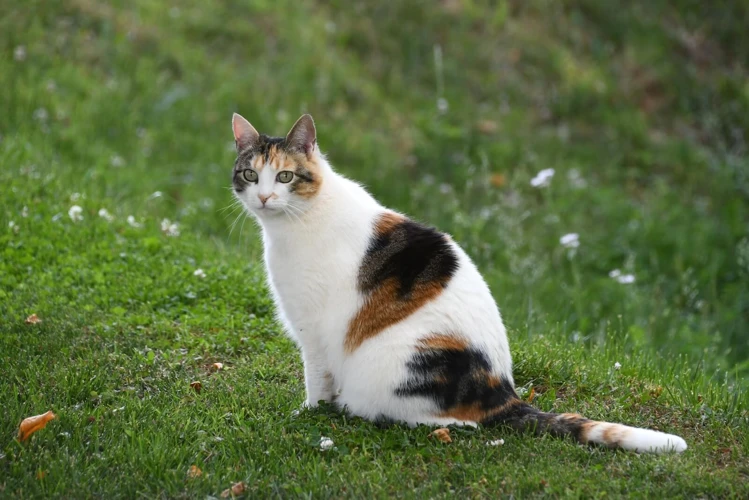
Preparing for the labor and birth of wirehair cats is a crucial step in ensuring the health and safety of both the mother and her litter. It’s important to start preparing several weeks before the due date to ensure that everything is in place. Here are some tips and guidelines to help owners prepare for the arrival of new kitten:
Creating a Comfortable Environment
First and foremost, the mother cat needs a comfortable and quiet space to give birth. This area should be warm, draft-free, and away from any distractions, like other pets or loud noises. A large cardboard box with a soft, clean blanket can serve as a makeshift birthing suite, or owners may choose to purchase a specially designed kitten birthing box.
Additionally, owners should consider providing a separate area for the mother cat to use as a litter box and for her to retreat to when she needs some time alone.
Knowing the Signs of Labor
Owners of wirehair cats should educate themselves about the signs of labor in felines. These signs include restlessness, nesting behaviors, panting, a decrease in appetite, grooming behaviors, and frequent trips to the litter box. When the mother cat begins to experience contractions, the owner should provide a comfortable and quiet area for her to deliver her kittens.
Assisting During Birth
It’s important for owners to be present during the birth process to assist the mother when necessary. However, it’s equally important to give the mother space and only intervene if there is a serious issue. Owners should make sure that they have clean towels and scissors on hand in case the mother needs assistance with cutting the umbilical cords.
Postpartum Care
After the birth, the mother cat and her kittens will require special care to prevent any complications. Owners should monitor the mother and her litter closely for any signs of distress, such as lack of appetite, lethargy, or unusual behavior. It’s essential to keep their living area clean and comfortable and provide regular vet check-ups to ensure their health and safety.
Preparing for the labor and birth of wirehair cats requires careful planning and attention to detail. Creating a comfortable environment for the mother, knowing the signs of labor, and being prepared to assist during birth are the keys to ensuring a safe delivery for both the mother and her litter. Postpartum care is equally important to ensure the health and wellbeing of the mother and kittens. By following these guidelines, owners can ensure a successful and stress-free birthing experience for their wirehair cats.
Creating a Comfortable Environment
To ensure a safe and successful birth, it’s essential for wirehair cat owners to create a comfortable environment for their pregnant queen. This means providing a warm and cozy nesting area where the queen can give birth, nurse her kittens, and recover from the birthing process. Creating a comfortable environment for your pregnant wirehair cat involves taking several factors into account, such as choosing the right location, providing the necessary supplies, and making sure that the area is quiet and free from disturbances. Let’s take a closer look at some steps you can take to make your wirehair cat’s nest as comfortable and welcoming as possible.
Knowing the Signs of Labor
During wirehair cat pregnancy, it’s important to know the signs of labor to ensure a safe and successful delivery. Here are some common signs of labor to look out for:
| Signs of Labor | Description |
|---|---|
| Nesting | As the due date approaches, the pregnant wirehair cat may start to prepare a nesting area by seeking out soft materials such as towels, blankets, or clothing. |
| Increased Vocalization | As labor nears, the wirehair cat may become more vocal than usual, meowing or yowling frequently. This is a natural instinct, as the cat may be calling for help. |
| Lethargy | As the wirehair cat’s energy is spent on the delivery, she may become increasingly lethargic or tired. This is entirely normal. |
| Nervousness or Restlessness | Some wirehair cats may exhibit signs of nervousness or restlessness before going into labor. This could include pacing or hiding. |
| Physical Changes | The wirehair cat’s belly will begin to drop as the delivery date approaches. Additionally, she may start to lick or clean her genitals more frequently. |
If you notice any of these signs, it’s important to keep an eye on your cat and provide her with a safe, warm, and quiet space to give birth. If there are any complications or if you have concerns, don’t hesitate to contact your veterinarian for guidance.
Postpartum Care
After a wirehair cat gives birth, it is essential to give them proper postpartum care to ensure their health and the health of their kittens. Here are some crucial postpartum care tips:
Monitor the Queen and Kittens: It is crucial to keep a close eye on the wirehair cat and her kittens to ensure their health. Make sure the queen is eating well and is producing milk for her kittens. Monitor the kittens to ensure they are nursing and gaining weight. If there are any concerns, contact your veterinarian immediately.
Observe Proper Nutrition: After giving birth, the wirehair cat needs proper nutrition that will help her produce milk. To ensure proper nutrition, continue feeding her kitten food, which is high in calories, protein, and calcium. Additionally, freshwater must be readily available to the queen at all times.
It is essential to gradually increase her food intake as the kittens grow, and she produces more milk. Do not overfeed the cat, though, as this can lead to obesity and other complications.
To ensure proper nutrition, consider speaking to your veterinarian about a high-quality kitten food that is formulated for the queen’s postpartum nutritional needs.
Postpartum care is critical for the mother and her kittens’ health and wellbeing. Regular check-ups with a veterinarian can also help address any health concerns that may arise during this period.
Monitor the Queen and Kittens
Ensuring proper postpartum care is crucial for the health of both the queen and her kittens. After giving birth, the mom cat, or queen, will need a lot of attention and monitoring to make sure she is recovering well. Additionally, it’s essential to keep a close eye on the new litter. As a pet owner, you play a critical role in monitoring the health of both the queen and her kittens during this important time. In this section, we’ll discuss some key factors to keep in mind during the postpartum period to ensure your furry friends stay healthy and happy.
Observe Proper Nutrition
Proper nutrition is crucial for your wirehair cat’s postpartum care. After giving birth, your cat’s body has undergone a significant change, and she needs to replenish her body’s nutrients. During this time, she will need high-quality food that is rich in protein to help her recover from lactation.
A well-balanced diet can also help prevent postpartum health issues such as anemia, which can be caused by blood loss during delivery and lactation. Additionally, a nutritious diet can boost the queen’s immune system, helping her fight off infection and preventing illnesses that could affect the kittens’ health.
To ensure your cat receives proper nutrition, provide her with a high-quality cat food that is specifically designed for nursing mothers. Look for food that contains at least 30% protein and is rich in calcium and other essential vitamins and minerals. Nourishing supplements can also be beneficial, but only under the guidance of a veterinarian.
It’s essential to feed your wirehair cat small, frequent meals to prevent her from overeating, which can lead to weight gain. Overfeeding can also cause your cat to develop health problems, such as fatty liver disease, which can be fatal if left untreated.
Below is a table outlining some essential nutrients your wirehair cat will require during postpartum care:
| Nutrient | Function | Food Sources |
|---|---|---|
| Protein | Helps in the production of milk and muscle regeneration | Meat, poultry, fish, eggs |
| Calcium | Involved in muscle function and bone growth of kittens | Dairy products, fish |
| Fiber | Aids digestion and prevents constipation | Whole-grain products, vegetables |
| Vitamin D | Essential for the absorption of calcium | Fish, eggs, sunlight exposure |
| Fats | Provides energy and aids in brain development of kittens | Fish, poultry, meat, eggs |
Proper nutrition is a crucial element in postpartum care for your wirehair cat. It’s important to provide her with high-quality food rich in protein, calcium, and other essential vitamins and minerals. Remember to feed your cat small, frequent meals and avoid overfeeding to prevent health issues. Consult with your veterinarian for expert advice on your cat’s dietary needs and the best food for her during this period.
Conclusion
In conclusion, while there are some common health issues that may arise during a wirehair cat’s pregnancy, there are also many steps that can be taken to address them. Regular vet check-ups, proper nutrition, and exercise are all key factors in keeping the mother and her kittens healthy throughout the pregnancy and after birth. Additionally, it is important to maintain good grooming habits, including regular bathing, brushing, and nail trimming. Preparing for labor and birth by creating a comfortable and safe environment and being aware of the signs of labor is also crucial.
Postpartum care is equally important, with ongoing monitoring of both the queen and her kittens and maintaining proper nutrition for them both. Owners should be aware that taking care of a litter of kittens is a big responsibility, and should be prepared to invest time, resources, and energy to ensure a successful outcome.
While pregnancy can be an exciting time for owners, it is important to be aware of the potential health issues and how to address them. By taking care of the mother and her future litter, wirehair cat owners can enjoy a successful pregnancy and healthy kittens.
Frequently Asked Questions
1. Can a wirehair cat still become pregnant while nursing?
Yes, it is possible for a wirehair cat to become pregnant while nursing. However, it is recommended to wait until the kittens are weaned before breeding again to ensure the mother cat’s health and proper care of the kittens.
2. What are the signs of gestational diabetes in wirehair cats?
Some signs of gestational diabetes in wirehair cats include increased thirst and urination, excessive weight gain, and lethargy. It is important to have regular vet check-ups throughout pregnancy to monitor any potential health issues.
3. Is it safe to give wirehair cats medication during pregnancy?
No, it is not safe to give wirehair cats medication during pregnancy without consulting with a veterinarian first. Some medications can be harmful to the developing kittens or the mother cat.
4. Can wirehair cats continue to exercise during pregnancy?
Wirehair cats can continue to exercise during pregnancy, but it is important to not overexert themselves. Low-impact exercise, such as walking or gentle play, can help improve their overall health and reduce the risk of certain health issues.
5. When should I start preparing for my wirehair cat’s labor and birth?
It is recommended to start preparing for your wirehair cat’s labor and birth at least two weeks before the expected due date. This can include setting up a nesting area, gathering necessary supplies, and familiarizing yourself with the signs of labor.
6. How often should I bathe my wirehair cat during pregnancy?
It is not recommended to bathe wirehair cats during pregnancy unless absolutely necessary. This is because excessive bathing can disrupt the natural balance of oils on their skin, which can cause skin irritation or infection.
7. What are the signs of eclampsia in wirehair cats?
Some signs of eclampsia in wirehair cats include restlessness, panting, muscle spasms, and seizures. If you suspect your cat is experiencing eclampsia, it is important to seek immediate veterinary attention.
8. How can I help my wirehair cat maintain proper nutrition during pregnancy?
You can help your wirehair cat maintain proper nutrition during pregnancy by feeding her a high-quality and nutritionally-balanced diet that is specifically formulated for pregnant cats. Consult with your veterinarian for recommendations on the best diet for your cat.
9. Should I trim my wirehair cat’s nails during pregnancy?
It is recommended to trim your wirehair cat’s nails during pregnancy to prevent any potential injuries to the kittens during birth. However, it is important to handle their paws gently and not trim them too short to avoid any discomfort or bleeding.
10. Can I spay my wirehair cat during pregnancy?
No, it is not safe to spay wirehair cats during pregnancy. It is recommended to wait until after the kittens are weaned and the mother cat has fully recovered before spaying her.

